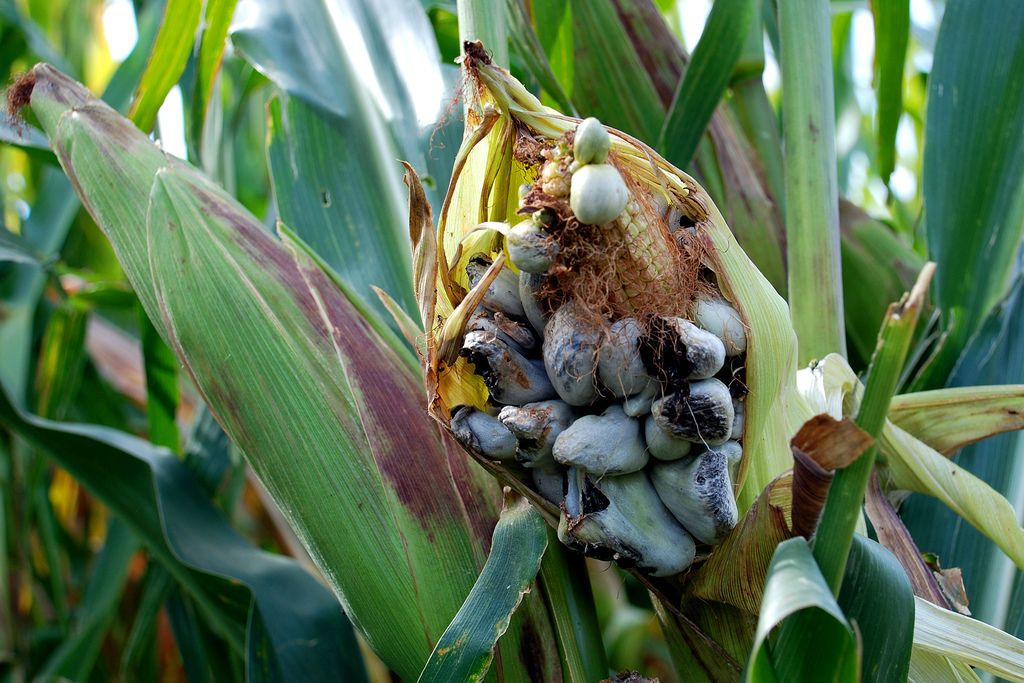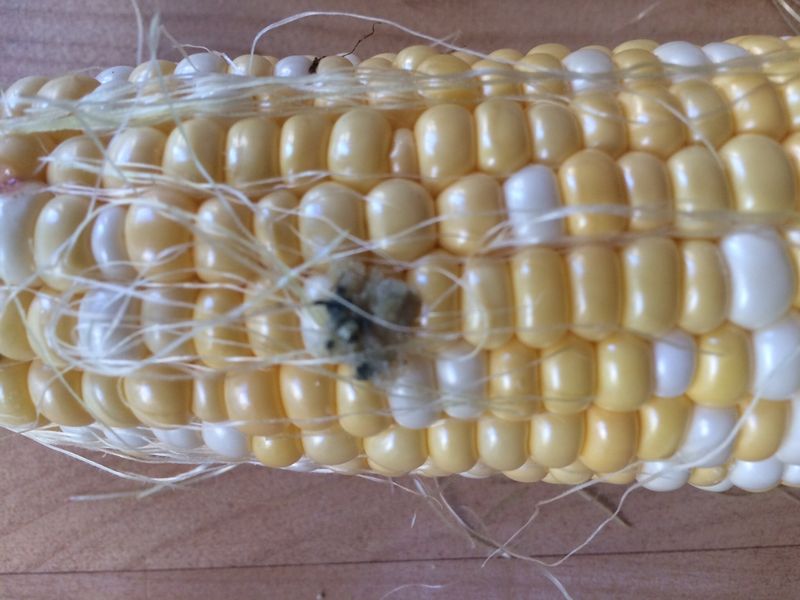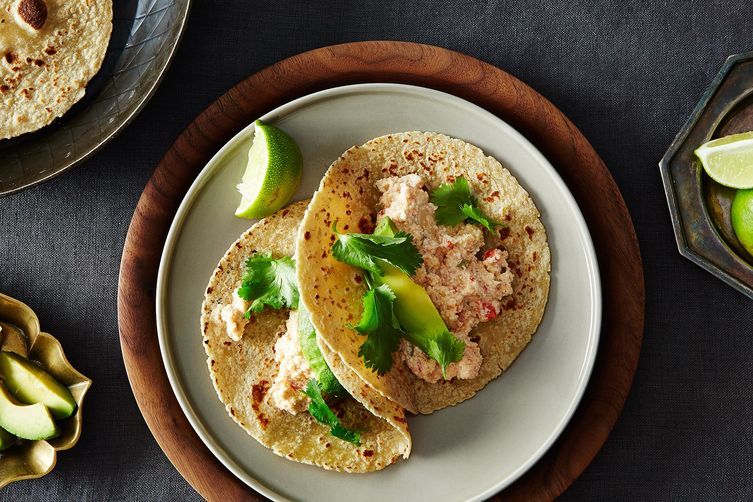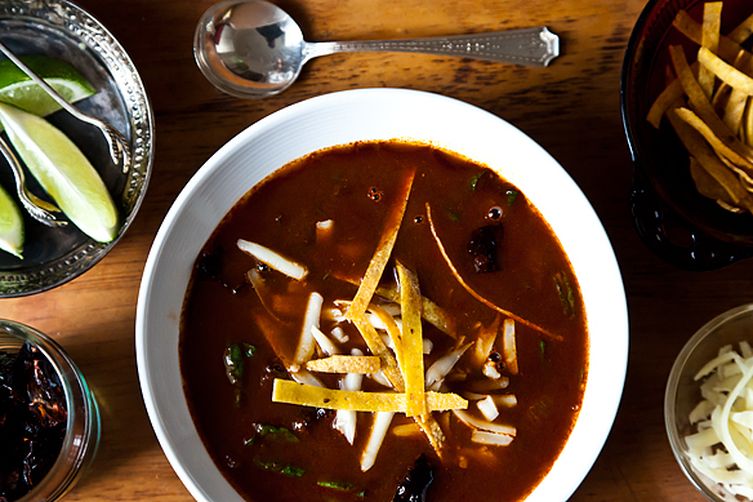Huitlacoche (corn smut) is a delicacy. This is just mold.

The real huitlacoche.
People adore huitlacoche (aka corn smut)—it’s a delicacy here in the States (and accordingly sometimes called corn truffles) and it has been eaten and cooked with in Mexico since the Aztecs. According to Andrew Zimmern and Tory Miller, fans of oft-maligned, eyebrow-raising ingredients, “Huitlacoche is great because it mixes the delicious flavors of sweet corn and mushrooms in a singular, unique, and wonderfully funky ingredient.”
That sounds delicious, so we’ve been hunting for fresh smut for some time. We called farms, made trips to the greenmarket, asked chefs and cheffy friends, and came up empty-handed. It was a dry season, everyone was telling us—not quite wet enough for the fungus to really grow (and we were searching at the end of corn season).

Is that peekabooing, infant huitlacoche on the tip?
But then: We were shucking some corn for the corn pudding we were making for Ruth Reichl when everything came to a halt. Huitlacoche! Here it was, a rare specimen.
We blame our thoughtlessness on our enthusiasm and curiosity. Luckily, we didn’t serve this "corn smut" to Ruth Reichl (though she did mention that some huitlacoche would be great on the matzo brei). We got smart. All corn fungus isn’t huitlacoche. If you find a little black bit on your cob of corn from the market, it might be huitlacoche, but it very well couldn’t be. So don’t risk it. Please.


Left: Do not eat. Right: Eat.
We’re already getting ready for our fresh huitlacoche hunt for next year. We asked Andrew Zimmern and Tory Miller to give us some pointers so we avoid eating bad mold.
Let's learn together:
How can you differentiate huitlacoche from other corn fungus?
Huitlacoche is the result of a fungus (Ustilago maydis) that attacks corn. You'll see large blue black blisters or "galls" in between the corn kernels.
Where can you find huitlacoche?
The best way to find fresh huitlacoche is to either pursue it in good Mexican markets or to develop a relationship with a farmer who is familiar with it and will intentionally inoculate some of his or her corn crop to produce it. Fortunately, it freezes pretty well, so if you are able to find fresh huitlacoche, buy extra. There are also many outlets online selling frozen huitlacoche or "corn truffles" as it has started to be called. Frozen is actually still pretty tasty, but DO NOT buy the canned stuff; it’s a poor substitute.


How do you eat it?
Prep it first: Once you have your huitlacoche, if it's still on the ear, you have to carefully remove it from the cob. It should still be a dark shade of blue. If it's too black, chances are it's past its prime. Using fish tweezers works well to pluck them off. Once removed, you can freeze them if you have a lot, or you can just start cooking them right away.
Keep it classic: One of the classic preparations of huitlacoche is to sauté it with garlic, onions, tomato, and perhaps some poblano chilies and finish it with epazote. This version is usually found as a filling in a tacos or tamales. It could be used as a garnish for a soup, cooked in an omelet, puréed with eggs and cream and made into a custard, or puréed and thinned with a bit of stock to create a sauce. Another popular dish is to cook the huitlacoche with chorizo, serrano chilies, onions, garlic, and shrimp and finish it with a piquant salsa.
Keep it funky: Think about using it in the same way you would a mushroom—sautéed in butter with shallots, garlic, and fresh thyme or added to soups for a little added funk flavor. A favorite is a quesadilla with squash blossoms and charred onions and huitlacoche.

Photos by creative commons, the editors, and James Ransom.
Tell us: How do you cook with huitlacoche?








See what other Food52 readers are saying.